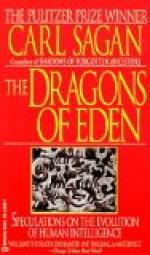|
This section contains 3,210 words (approx. 11 pages at 300 words per page) |

|
SOURCE: "Brain Theory and Literary Criticism: Sagan on Art," in Essays in Arts and Sciences, Vol. XI, September, 1982, pp. 87-95.
In the following essay, Thomiszer considers Sagan's application of scientific discovery to explain the origin and significance of art in The Dragons of Eden. According to Thomiszer, "to confuse aesthetics with empiricism, as Sagan does, is to further confuse an already clouded issue."
Science and art, so long perceived as mighty opposites, are enjoying a new recognition of kinship. The "two cultures," a model based on the disparate results of science and art, has been discarded. In its place has arisen a unified approach to both activities that focuses on their shared point of departure: both art and science represent man's attempt to know himself and his world. That the pursuit and expression of knowledge is the basis of science and art is hardly a new idea. However...
|
This section contains 3,210 words (approx. 11 pages at 300 words per page) |

|


